__
カウルバッハ
Kaulbach
The Tower of Babel, The Rise of Greece,The Destruction of Jerusalem, The Battle of the Huns,
The Crusades, and The Reformation.
上記によると、カウルバッハはヘーゲル歴史哲学を絵画で表現しようとしていたらしい。
The Tower of Babel
Battle of Salamis( The Rise of Greece)
この海戦でギリシア艦隊が勝利をおさめ、ペルシア戦争は新たな局面を迎えることになる。
The Destruction of Jerusalem
エルサレム攻囲戦 (70年) - Wikipedia
The Battle of the Huns(フン族の戦い)
~マルクス、フロイトが参照している有名な絵。
上の絵はマルクスが『ドイツイデオロギー』内、「ライプツィヒ宗教会議」 (邦訳全集3,74頁)で観念性の揶揄の例として否定的に使った。
「…カウルバッハによって予言的に描かれた匈奴の戦いが現実におこっている。」大月全集3,74頁
「 一八四五年度の『ヴイーガント季刊誌』第三巻のなかで、
カウルバッハによって予言的に描かれた匈奴の戦いが現実
におこっている。死んでもなお怨み消えやらぬ斃(たお)された者、
たちの霊どもが空中でどよめかす叫喚と号哭に戦いの音、
鬨(かちどき)の声、剣、楯、鉄車の響きがまざる。しか問題は地
上の事どもにあるのではない。聖なる戦いは保護関税、憲
法、馬鈴薯病、銀行制度、鉄道のためにおこなわれるので
はなくて、霊のいとも神聖なる関心事、つまり「実体」、
「自己意識」、「批判」、「唯一者」、「真の人間」のためなの
でる、われわれは教父たちの宗教会議の座にいるのであ
る。彼らはこの種の人たちの最後の標本であり、それにお
らくはこれが至高のもの、つまり絶対的なものの事柄で
弁護がおこなわれる最後の機会であろうから、審理の模様
について記録をとるだけの値うちはある。
まずはじめに聖ブルーノがいる。….」(大月全集3,74頁)
フロイトは「自我とエス」1923で肯定的に参照している。
「超自我の発生史の教えるところでは、自我とエスの対象備給との早期の葛藤が、その対象備給の遺産である超自我との葛藤として受け継がれることがありうる。もし自我がエディプス・コンプレクスを支配するのに成功しなかったならば、エスに由来するコンプレクスのエネルギー備給は、ふたたび自我理想の反動形成となって作用するだろう。この理想とこの無意識的な衝動興奮とのおびただしい交通は、理想自身が大部分は無意識であり、自我に通じることができないままでいるという謎を解くであろう。深層で荒れ狂い、すみやかな昇華作用と同一視によって終りにならなかった戦いは、フン族の戦闘を描いたカウルバハの絵のように、より高い領域でつづいている。」
(フロイト著作者6,284頁)
The Crusades(十字軍)
The Reformation (宗教改革)
Wilhelm von Kaulbach - Wikimedia Commons
/法=自由の概念
/__\
啓蒙とフランス革命(法、政府、愛国心)
フリードリッヒ大王、カント、1791人権宣言\/__ナポレオン
/\ /\
/__\ 近世 /_フリードリヒ大王
/宗教改革\ /\国家形成
ルター、魔女裁判_\/異端審問、1648ウェストファリア条約
王国裁判所\ /\
/__\ /君主制、ルネッサンス、学問と芸術
カール大帝のフランク王国/\ <ゲルマン世界> /\ /\
帝国分裂、協会分裂\/__\ 1215マグナ=カルタ /_1338レンゼの会議
/\ カリフ 1122ヴォルムス協約 /\
メロヴィング王家__\ 古代 /大帝国 封建制と_\ 中世 /__騎士団
民族大移動/\ /\回教/\ 位階組織/\ /十字軍/\
クロヴィウス、フランク王国、東ゴート王国_\/マホ\/トゥー/コンスタンツ\/__\/フランシスコ修道会
/\ メット ル の和議 /\
ユダヤ、エジプト\ ポワティエの /__\
/\ /\ 戦い /\ /\
ペルシャ/小アジア /__\/__\
/\ /メディア、ペルシャ /\ /\
/ \ペルシア/ \ <ヘーゲル世界史> /__\ /__\
ゼンド民族\ /キュロス王の死 /\ /\ /\ /\
/__\/__\/アッシリア、バビロニア、 /__\/__\/__\/__\
/\ /\ /没落 /\
/易経\ /ラマ教 マケドニア王国\ /東ローマ帝国
/四庫全書\ <東洋世界> / 仏教 \ /\外交/\ <古典的世界> /帝政時代\
/______\ /仏陀__シャーマニズム ペルシア戦争\/ペロポネソス戦争 /帝政\/キリスト教
/\ /\ /\ /\ /\ /七賢人 /\ /\
/国家\ 中国 /懲罰法 ヴェーダ\インド / \ /__\ギリシア/政治的、 /__\ローマ /__\
/ 書経 \ /皇帝 /\ / \ /マヌ法典\ /\精神/\ /\個人/\第2回ポエニ戦争以前 /第2回ポエニ戦争
/__家族__\/始皇帝/官僚\カースト、バラモン______\/トロヤ戦争_\/主観\/客観\/リキニウス法\/グラックス兄弟
ホメロス ギリシア神話
序論
/法=自由の概念
/__\
啓蒙とフランス革命(法、政府、愛国心)
フリードリッヒ大王、カント、1791人権宣言\/__ナポレオン
/\ /\
/__\ 近世 /_フリードリヒ大王
/宗教改革\ /\国家形成
ルター、魔女裁判_\/異端審問、ウェストファリア条約
王国裁判所\ /\
/__\ /君主制、ルネッサンス、学問と芸術
カール大帝のフランク王国/\ <ゲルマン世界> /\ /\
帝国分裂、協会分裂\/__\ 1215マグナ=カルタ /_1338レンゼの会議
/\ カリフ 1122ヴォルムス協約 /\
メロヴィング王家__\ 古代 /大帝国 封建制と_\ 中世 /__騎士団
民族大移動/\ /\回教/\ 位階組織/\ /十字軍/\
クロヴィウス、フランク王国、東ゴート王国_\/マホ\/トゥー/コンスタンツ\/__\/フランシスコ修道会
/\ メット ル の和議 /\
/ユダヤ、エジプト ポワティエの /__\
/\ /\ 戦い /\ /\
ペルシャ/小アジア /__\/__\
/\ /メディア、ペルシャ /\ /\
/ \ペルシア/ \ <ヘーゲル世界史> /__\ /__\
ゼンド民族\ /キュロス王の死 /\ /\ /\ /\
/__\/__\/アッシリア、バビロニア、 /__\/__\/__\/__\
/\ /\ /没落 /\
/易経\ /ラマ教 マケドニア王国\ /東ローマ帝国
/四庫大全\ <東洋世界> / 仏教 \ /\外交/\ <古典的世界> /帝政時代\
/______\ /仏陀__シャーマニズム ペルシア戦争\/ペロポネソス戦争 /帝政\/キリスト教
/\ /\ /\ /\ /\ /七賢人 /\ /\
/国家\ 中国 /懲罰法 ヴェーダ\インド / \ /__\ギリシア/政治的、 /__\ローマ /__\
/ 書経 \ /皇帝 /\ / \ /マヌ法典\ /\精神/\ /\個人/\第2回ポエニ戦争以前 /第2回ポエニ戦争
/__家族__\/始皇帝/官僚\カースト、バラモン______\/トロヤ戦争_\/主観\/客観\/リキニウス法\/グラックス兄弟
ホメロス ギリシア神話
The Tower of Babel,
The Rise of Greece,
The Destruction of Jerusalem,
The Battle of the Huns,
The Crusades,
The Reformation.
ヘーゲル歴史哲学の全8個あるセクションの(中国とインドを除く)後半6個からそれぞれトピックを選んで題材にしている。
ヘーゲル『歴史哲学講義』↓
/啓蒙とフランス革命
フリードリッヒ大王,カント,1791人権宣言
/\近世/国家形成
ルター,宗教改革,魔女裁判\/異端審問,ウェストファリア条約,フリードリヒ大王
/\ <キリスト教/\
カール大帝のフランク王国\ 世界>/1215マグナ=カルタ,1338レンゼの会議,ルネッサンス
/\古代/\ /\中世/\
民族大移動\/回教\ /コンスタ,十字軍
/\ ンツの和議 /\
ユダヤ,エジプト /__\
/ペルシア\ <世界史> /\ /\
ゼンド民族\/キュロス王の死 /__\/__\
/\<東洋世界>/\マケドニア敗北\<古典的世界>\
四庫大全\ /仏教\ ペルシア、ペロポネソス/帝政,キリスト教,東ローマ帝国
/\中国/\ /\インド\戦争/ギリシア\戦争/ローマ \
/書経\皇帝_ヴェーダ\/マヌ\/トロヤ戦争 \/リキ\/第2回ポエニ戦争
法典 ニウス法
http://yojiseki.exblog.jp/8219229

Destruction of Jerusalem.
Having hitherto worked almost exclusively in fresco, he spent some time in Venice and a year in Rome to prepare himself for painting the cartoon in oil for the new Pinakothek, completing it in 1846. About the same time he commenced his famous designs illustrative of the history of mankind for the Neues Museum at Berlin, which were executed by his pupils and completed in 1860. They consist of six frescoes, representing The Tower of Babel, Homer and the Greeks, The Destruction of Jerusalem, The Battle of the Huns (German: Hunnenschlacht – a painting that inspired the 1857 symphonic poem Hunnenschlacht by Liszt), The Crusaders at the gates of Jerusalem, and The Age of the Reformation.[1] The Destruction of Jerusalem was a copy of an earlier oil painting, much admired by Friedrich Wilhelm I of Prussia, which was by then already in the collection of Ludwig I of Bavaria.[2]
These major tableaux, severally 30 feet long, and each comprising over one hundred figures above life-size, were surrounded by minor compositions making more than twenty in all. The idea was to congregate around the world's historic dramas the prime agents of civilization; thus here were assembled allegoric figures of Architecture and other arts, of Science and other kingdoms of knowledge, together with lawgivers from the time of Moses, not forgetting Frederick the Great. The chosen situation for this imposing didactic and theatric display was the Treppenhaus or grand staircase in the Neues Museum, Berlin; the surface was a granulated, absorbent wall, specially prepared; the technical method was that known as "water-glass," or "liquid flint," the infusion of silica securing permanence. The same medium was adopted in the later murals in the Palace of Westminster.[1] The staircase was severely damaged during the Second World War, and only traces of Kaulbach's work remain.[3]
His perspicuous and showy manner also gained him abundant occupation as a book illustrator. Among his engraved designs are the Shakespeare gallery, the Goethe gallery and a folio edition of the Gospels. With regard to these examples of the Munich school, it was asserted that Kaulbach had been unfortunate alike in having found Cornelius for a master and King Ludwig for a patron, that he attempted subjects far beyond him, believing that his admiration for them was the same as inspiration; and supplied the lack of real imagination by a compound of intellect and fancy. Nevertheless, in such compositions as the Destruction of Jerusalem and the Battle of the Huns, Kaulbach shows creative imagination. As a dramatic poet he tells the story, depicts character, seizes on action and situation, and thus as it were takes the spectator by storm. The manner may be occasionally noisy and ranting, but the effect after its kind is tremendous. The cartoon, which, as usual in German art of the time, is superior to the ultimate picture, was executed in the artist's prime at the age of thirty. At this period, as here seen, the knowledge was little short of absolute; subtle is the sense of beauty; playful, delicate, firm the touch; the whole treatment artistic.[1]
Kaulbach's style was eclectic; in the Age of Homer the types and the treatment are derived from Greek marbles and vases; then in the Tower of Babel the severity of the antique gives place to the suavity of the Italian renaissance; while in the Crusades the composition is let loose into modern romanticism, and so the manner descends into the midst of the 20th century. And yet this scholastically compounded art is so nicely adjusted and smoothly blended that it casts off all incongruity and becomes homogeneous as the issue of one mind. But the public craved change; and so in later years Kaulbach's popularity declined, and he had to witness, not without inquietude, the rise of an opposing party of naturalism and realism. He is perhaps best known for his unusual representation of death, destruction and madness.[8]
ReferencesEditFurther readingEdit
それまでほとんどフレスコ画しか描いていなかった彼は、新しいピナコテークのために油絵を描く準備をするために、ヴェネツィアにしばらく滞在し、ローマに1年滞在して、1846年に完成させた。同じ頃、彼はベルリンの新博物館のために、人類の歴史を描いた有名なデザインに着手し、弟子たちによって制作され、1860年に完成した。バベルの塔」「ホメロスとギリシア人」「エルサレムの破壊」「フン族の戦い」「エルサレム城門の十字軍」「宗教改革の時代」の6つのフレスコ画で構成されている[1]。 エルサレムの破壊」は、プロイセンのフリードリヒ・ヴィルヘルム1世が賞賛した初期の油絵を模写したもので、当時すでにバイエルンのルートヴィヒ1世が所蔵していた[2]。
長さ30フィート、100人以上の実物大の人物で構成された主要なタブローの周りには、20以上の小品が配置されています。建築やその他の芸術、科学やその他の知識の王国の寓意的な人物、モーゼの時代からの法の番人、そしてフレデリック・ザ・グレートも含まれている。この堂々とした教訓的かつ演劇的な展示のために選ばれたのは、ベルリンの新博物館にあるトレッペンハウス(大階段)であった。表面は、特別に用意された粒状の吸収性のある壁で、技術的には「水ガラス」または「液体火打石」として知られる方法で、シリカを注入することで永続性を確保した。階段は第二次世界大戦で大きな被害を受け、コールバッハの作品の痕跡は残されていない[3]。
派手な表現で、書籍の挿絵画家としても活躍した。シェイクスピア・ギャラリー、ゲーテ・ギャラリー、福音書のフォリオ版などをデザインしている。これらのミュンヘン派の例について、コールバッハは、コーネリアスを師とし、ルートヴィヒ王を後援者としたことで同様に不幸になったと主張している。彼は、自分をはるかに超えたテーマに挑戦し、それらへの賞賛がインスピレーションと同じであると信じ、真の想像力の欠如を知性と空想の複合で補っている。しかし、「エルサレムの破壊」や「フン族の戦い」などの作品で、コールバッハは創造的な想像力を発揮している。劇詩人として、彼は物語を語り、人物を描き、行動と状況を捉え、その結果、あたかも観客を嵐に巻き込むかのようにしている。そのやり方は、時として騒々しく暴言を吐くこともあるが、その種類に応じた効果は絶大である。このカートゥーンは、当時のドイツ美術の常として、究極の絵よりも優れているが、画家の全盛期である30歳のときに制作されたものである。この時期には、ここで見られるように、知識はほとんど絶対的なものではなく、美の感覚は繊細で、遊び心があり、繊細で、しっかりとしたタッチで、全体の処理は芸術的であった。
スタイル 編集
カウルバッハの作風は折衷的で、ホメロスの時代ではギリシャの大理石や壷から型と処理を得て、バベルの塔では古代の厳しさからイタリア・ルネッサンスの軽やかさに変わり、十字軍では構成が近代的なロマンティシズムに放たれ、20世紀の中頃まで作風が下降していく。しかし、このように学説的に合成された芸術は、非常にうまく調整され、スムーズに融合されているため、すべての不調和を取り除き、一つの心の問題として同質化されている。しかし、大衆は変化を求めていたので、後年、コールバッハの人気は低下し、自然主義や写実主義の反対派が台頭してくるのを不安なく見守らなければならなかった[3]。 死や破壊、狂気などの特異な表現でよく知られている[8]。
注記 編集
^ a b c d e Atkinson 1911, p. 698.
^ Karlholm, Dan (2006). Art of illusion : the representation of art history in the nineteenth-century Germany and beyond (2nd ed.). Bern: P. Lang. p. 236. ISBN 978-3-03910-958-6.
^ a b c Atkinson 1911, p. 699.
^ キンメルマン、マイケル。"For Berlin Museum, a Modern Makeover That Doesn't Deny the Wounds of War". New York Times. 2014年3月15日に取得。
^ アトキンソン 1911, pp.698-699.
^ Paul Maucher: Alphabetic register of house owners 1849-1851 Archived 2009-03-06 at the Wayback Machine, p. 30.
^ "Book of Members, 1780-2010: 第K章" (PDF). American Academy of Arts and Sciences(米国芸術科学アカデミー)。2016年9月23日に取得。
^ ウィルヘルム・リューブケ、ラッセル・スタージス、『美術史概説』、468-469ページ。グーグルブック。2009年6月18日にアクセスしました。
参考文献 編集
この記事は、現在パブリックドメインとなっている出版物から文章を引用しています。アトキンソン,ジョセフ・ビービングトン(1911年)."Kaulbach, Wilhelm von". In Chisholm, Hugh (ed.). Encyclopædia Britannica. 15 (11th ed.). ケンブリッジ大学出版局,pp.698-699.
関連記事 編集
ウィキメディア・コモンズには、ヴィルヘルム・フォン・コールバッハに関連するメディアがあります。
ビング、ユリウス (1879). "Kaulbach, Wilhelm von" . In Ripley, George; Dana, Charles A. (eds.). The American Cyclopædia.
1911 Encyclopædia Britannica/Kaulbach, Wilhelm von
KAULBACH, WILHELM VON (1805–1874), German painter, was born in Westphalia on the 15th of October 1805. His father, who was poor, combined painting with the goldsmith’s trade, but means were found to place Wilhelm, a youth of seventeen, in the art academy of Düsseldorf, then becoming renowned under the directorship of Peter von Cornelius. Young Kaulbach contended against hardships, even hunger. But his courage never failed; and, uniting genius with industry, he was ere long foremost among the young national party which sought to revive the arts of Germany. The ambitious work by which Louis I. sought to transform Munich into a German Athens afforded the young painter an appropriate sphere. Cornelius had been commissioned to execute the enormous frescoes in the Glyptothek, and his custom was in the winters, with the aid of Kaulbach and others, to complete the cartoons at Düsseldorf, and in the summers, accompanied by his best scholars, to carry out the designs in colour on the museum walls in Munich. But in 1824 Cornelius became director of the Bavarian academy. Kaulbach, not yet twenty, followed, took up his permanent residence in Munich, laboured hard on the public works, executed independent commissions, and in 1849, when Cornelius left for Berlin, succeeded to the directorship of the academy, an office which he held till his death on the 7th of April 1874. His son Hermann (1846–1909) also became a distinguished painter.
Kaulbach matured, after the example of the masters of the Middle Ages, the practice of mural or monumental decoration; he once more conjoined painting with architecture, and displayed a creative fertility and readiness of resource scarcely found since the era of Raphael and Michelangelo. Early in the series of his multitudinous works came the famous Narrenhaus, the appalling memories of a certain madhouse near Düsseldorf; the composition all the more deserves mention for points of contact with Hogarth. Somewhat to the same category belong the illustrations to Reineke Fuchs. These, together with occasional figures or passages in complex pictorial dramas, show how dominant and irrepressible were the artist’s sense of satire and enjoyment of fun; character in its breadth and sharpness is depicted with keenest relish, and at times the sardonic smile bursts into the loudest laugh. Thus occasionally the grotesque degenerates into the vulgar, the grand into the ridiculous, as in the satire on “the Pigtail Age” in a fresco outside the New Pinakothek. Yet these exceptional extravagances came not of weakness but from excess of power. Kaulbach tried hard to become Grecian and Italian; but he never reached Phidias or Raphael; in short the blood of Dürer, Holbein and Martin Schongauer ran strong in his veins. The art products in Munich during the middle of the 19th century were of a quantity to preclude first-rate quality, and Kaulbach contracted a fatal facility in covering wall and canvas by the acre. He painted in the Hofgarten, the Odeon, the Palace and on the external walls of the New Pinakothek. His perspicuous and showy manner also gained him abundant occupation as a book illustrator: in the pages of the poets his fancy revelled; he was glad to take inspiration from Wieland, Goethe, even Klopstock; among his engraved designs are the Shakespeare gallery, the Goethe gallery and a folio edition of the Gospels. With regard to these examples of “the Munich school,” it was asserted that Kaulbach had been unfortunate alike in having found Cornelius for a master and King Louis for a patron, that he attempted “subjects far beyond him, believing that his admiration for them was the same as inspiration”; and supplied the lack of real imagination by “a compound of intellect and fancy.”
Nevertheless in such compositions as the Destruction of Jerusalem and the Battle of the Huns Kaulbach shows creative imagination. As a dramatic poet he tells the story, depicts character, seizes on action and situation, and thus as it were takes the spectator by storm. The manner may be occasionally noisy and ranting, but the effect after its kind is tremendous. The cartoon, which, as usual in modern German art, is superior to the ultimate picture, was executed in the artist’s prime at the age of thirty. At this period, as here seen, the knowledge was little short of absolute; subtle is the sense of beauty; playful, delicate, firm the touch; the whole treatment artistic.
Ten or more years were devoted to what the Germans term a “cyclus”—a series of pictures depicting the Tower of Babel, the Age of Homer, the Destruction of Jerusalem, the Battle of the Huns, the Crusades and the Reformation. These major tableaux, severally 30 ft. long, and each comprising over one hundred figures above life-size, are surrounded by minor compositions making more than twenty in all. The idea is to congregate around the world’s historic dramas the prime agents of civilization; thus here are assembled allegoric figures of Architecture and other arts, of Science and other kingdoms of knowledge, together with lawgivers from the time of Moses, not forgetting Frederick the Great. The chosen situation for this imposing didactic and theatric display is the Treppenhaus or grand staircase in the new museum, Berlin; the surface is a granulated, absorbent wall, specially prepared; the technical method is that known as “water-glass,” or “liquid flint,” the infusion of silica securing permanence. The same medium was adopted in the later wall-pictures in the Houses of Parliament, Westminster.
The painter’s last period brings no new departure; his ultimate works stand conspicuous by exaggerations of early characteristics. The series of designs illustrative of Goethe, which had an immense success, were melodramatic and pandered to popular taste. The vast canvas, more than 30 ft. long, the Sea Fight at Salamis, painted for the Maximilianeum, Munich, evinces wonted imagination and facility in composition; the handling also retains its largeness and vigour; but in this astounding scenic uproar moderation and the simplicity of nature are thrown to the winds, and the whole atmosphere is hot and feverish.
Kaulbach’s was a beauty-loving art. He is not supreme as a colourist; he belongs in fact to a school that holds colour in subordination; but he laid, in common with the great masters, the sure foundation of his art in form and composition. Indeed, the science of composition has seldom if ever been so clearly understood or worked out with equal complexity and exactitude; the constituent lines, the relation of the parts to the whole, are brought into absolute agreement; in modern Germany painting and music have trodden parallel paths, and Kaulbach is musical in the melody and harmony of his compositions. His narrative too is lucid, and moves as a stately march or royal triumph; the sequence of the figures is unbroken; the arrangement of the groups accords with even literary form; the picture falls into incident, episode, dialogue, action, plot, as a drama. The style is eclectic; in the Age of Homer the types and the treatment are derived from Greek marbles and vases; then in the Tower of Babel the severity of the antique gives place to the suavity of the Italian renaissance; while in the Crusades the composition is let loose into modern romanticism, and so the manner descends into the midst of the 19th century. And yet this scholastically compounded art is so nicely adjusted and smoothly blended that it casts off all incongruity and becomes homogeneous as the issue of one mind. But a fickle public craved for change; and so the great master in later years waned in favour, and had to witness, not without inquietude, the rise of an opposing party of naturalism and realism. (J. B. A.)
1911年 ブリタニカ百科事典/Kaulbach, Wilhelm von - Wikisource, the free online library
https://en.m.wikisource.org/wiki/1911_Encyclop%C3%A6dia_Britannica/Kaulbach,_Wilhelm_von
1911年 ブリタニカ百科事典/Kaulbach, Wilhelm von
KAULBACH, WILHELM VON (1805-1874), ドイツの画家, 1805年10月15日にヴェストファーレンで生まれた。貧乏だった父は金細工の仕事をしながら絵を描いていたが、17歳のウィルヘルムをデュッセルドルフの美術学校に入学させることができたのは、ペーター・フォン・コーネリアスの指導のもとで有名になっていたからである。若きコールバッハは、飢えという苦難に立ち向かった。しかし、彼の勇気は決して衰えることがなく、天才的な才能と産業の融合により、ドイツの芸術を復興させようとする若い国民党の中で、いつの間にか先頭に立っていた。ルイ1世がミュンヘンをドイツのアテネに変えようとした野心的な計画は、若き画家にふさわしい分野であった。コーネリアスは、グリプトテークの巨大なフレスコ画の制作を依頼されていたが、冬にはコールバッハらの助けを借りてデュッセルドルフで漫画を完成させ、夏には優秀な学者たちを引き連れてミュンヘンの美術館の壁にカラーでデザインを描くのが恒例となっていたのである。しかし、1824年、コーネリアスはバイエルンのアカデミーのディレクターになった。20歳になっていなかったコールバッハもそれに続き、ミュンヘンに定住し、公共事業に尽力し、独自の依頼をこなし、1849年にコーネリアスがベルリンに去った後、アカデミーのディレクターの地位を継承し、1874年4月7日に亡くなるまでその職を務めた。息子のヘルマン(1846-1909)も優れた画家となった。
カウルバッハは、中世の巨匠たちを見習って、壁画やモニュメントの装飾を成熟させた。彼は再び絵画と建築を結びつけ、ラファエロやミケランジェロの時代以降には見られなかった創造的な豊饒さと即応性を示した。この作品は、デュッセルドルフ近郊のある精神病院の悲惨な記憶を描いたもので、その構図はホガースとの接点という点でも注目に値する。また、ライネケ・フックスの挿絵も同様である。これらの作品は、複雑な絵のドラマの中に時折登場する人物や一節とともに、この画家の風刺と遊び心がいかに支配的で抑えがたいものであったかを示している。時にはグロテスクなものが低俗なものに、壮大なものが滑稽なものに変貌することもある。しかし、このような例外的な贅沢は、弱さからではなく、力の強さから来ている。Kaulbachは、ギリシャ人やイタリア人になろうと努力したが、PhidiasやRaphaelには届かなかった。つまり、彼の血管には、Dürer、Holbein、Martin Schongauerの血が強く流れていたのである。19世紀半ばのミュンヘンの美術品は、量が多いだけで質は一流ではなく、コールバッハは壁やキャンバスを1エーカー単位で覆うという致命的な手法をとっていた。彼は、ホーフガルテン、オデオン、宮殿、そして新ピナコテークの外壁に絵を描いた。ヴィーラントやゲーテ、さらにはクロプシュトックからもインスピレーションを得て、詩人たちのページを楽しんだ。これらの「ミュンヘン派」の例について、コールバックは、コーネリアスを師とし、ルイ王を後援者としたことで同様に不幸になったと主張し、「自分をはるかに超えたテーマに挑戦し、それに対する賞賛がインスピレーションと同じだと信じていた」とし、真の想像力の欠如を「知性と空想の融合」で補っている。
しかし、「エルサレムの破壊」や「フン族の戦い」などの作品で、コールバックは創造的な想像力を発揮している。劇詩人として、彼は物語を語り、人物を描き、行動と状況を捉え、その結果、あたかも観客を虜にするかのようである。そのやり方は時として騒々しく、荒々しいものかもしれないが、その種類に応じた効果は絶大である。この漫画は、ドイツの近代美術の例に漏れず、究極の絵よりも優れており、画家の全盛期である30歳の時に描かれたものである。繊細な美意識、遊び心のある繊細でしっかりとした手触り、そして全体的な扱いが芸術的である。
バベルの塔、ホメロスの時代、エルサレムの破壊、フン族の戦い、十字軍、宗教改革などを描いた一連の絵、ドイツ人が「サイクロース」と呼ぶものに10年以上が費やされた。
これらの主要なタブローは、それぞれ30フィートの長さがあり、それぞれ100人以上の実物大の人物で構成されています。
長さ30フィート、実物大の100人以上の人物で構成された主要なタブローの周りに、20以上の小品が配置されています。このアイデアは、世界の歴史的なドラマの周りに、文明の主要なエージェントを集めるというもので、建築やその他の芸術、科学やその他の知識の王国の寓意的な人物、モーゼの時代からの法律家、そしてフレデリック・ザ・グレートも含まれています。この堂々とした教訓的かつ演劇的な展示のために選ばれたのは、ベルリンの新博物館のトレッペンハウス(大階段)である。表面は、特別に用意された粒状の吸収性のある壁で、技術的には「水ガラス」または「液体フリント」として知られる方法で、シリカを注入することで永続性を確保している。ウェストミンスターの国会議事堂の後の壁画にも同じ媒体が採用されている。
画家の晩年には新たな出発はなく、彼の究極の作品は初期の特徴の誇張によって際立っている。大成功を収めたゲーテを描いた一連のデザインは、メロドラマ的で、大衆の好みに迎合したものだった。ミュンヘンのマキシミリアネウムのために描かれた、長さ30フィートを超える巨大なカンバス「サラミスの海戦」は、持ち前の想像力と構成力を発揮しており、ハンドリングも大きさと勢いを保っている。
カウルバッハは美を愛する芸術であった。彼は色彩学者としては最高ではなく、実際には色彩を従属させる流派に属している。しかし、彼は偉大な巨匠たちと同様に、自分の芸術の確かな基礎を形と構成に置いているのである。実際、構図の科学がこれほど明確に理解され、これほど複雑かつ正確に作業されたことは稀であり、構成線、全体に対する部分の関係が絶対的に一致している。彼の物語も明快で、堂々とした行進曲や王室の勝利のように動いている。人物の順序は途切れることなく、グループの配置は文学的な形式と一致しており、絵はドラマのように事件、エピソード、対話、アクション、プロットに分かれている。そのスタイルは折衷的で、ホメロスの時代にはギリシャの大理石や壷から型や処理を得て、バベルの塔では古代の厳しさがイタリア・ルネッサンスの軽やかさに取って代わり、十字軍では構図が近代的なロマン主義に放たれ、19世紀の中頃まで続いている。しかし、このように学説的に合成された芸術は、非常にうまく調整され、スムーズに融合されているため、すべての不調和を取り除き、一つの心の問題として同質化されている。しかし、気まぐれな大衆は変化を求めた。そのため、後年、偉大な巨匠の人気は衰え、自然主義や写実主義の反対派が台頭するのを、不安を感じずにはいられなかった。 (J. B. A.)
Wilhelm von Kaulbach
Frederick the Great.
フリードリヒ2世は、第3代プロイセン王。 優れた軍事的才能と合理的な国家経営でプロイセンの強大化に努め、啓蒙専制君主の典型とされる。また、フルート演奏をはじめとする芸術的才能の持ち主でもあり、ロココ的な宮廷人らしい万能ぶりを発揮した。
ウィキペディア
Wilhelm von Kaulbach - 57 artworks - painting
_
フォン・コールバッハ。美術品の専門家による鑑定、鑑定書、美術品の専門家による鑑定 - Art Experts
wiki
作品群
カウルバッハはヘーゲル歴史哲学を絵画で表現しようとしていたらしい。
core, and perhaps appropriately so, since Hegel was the dominant philosophcr of the Vormärz epoch (1815-1848). 1
The Munich master Wilhelm von Kaulbach made an ambitious attempt to represent the whole of Hegel's philosophy of history on the walls of the New Museum in Berlin in six complex, encyclopedie images : The Tower or Babel, The Rise of Greece,The Destruction of Jerusalem, The Battle of the Huns, The Crusades, and The Reformation. By the time Kaulbach completed the twenty-year project in 1865, however, its declamatory character was so out of touch with the times that he wound up ridiculing it himself (fig · 7. I).
An ebullient personality like Vernet in France, Kaulbach's taste for large-scale visual spectacles appealed to kings Ludwig I of Bavaria and Friedrich Wilhelm IV and their tunnel vision of civic improvements. Rather than posit Hegel's direct inßuence on his contemporaries, I believe we should examine what his ideas had in common with the work of other representatives of culture in the pre-March period-in a less grandiose format than that projected by Kaulbach.
Kaulbach had studied monumental painting under Peter von Cornelius, first at Düsseldorf and than at Munich, reminding us of the central role of the Nazarenes in the development of nineteenth-century German art. Two diverging strains in painting develop during the Restoration, both receiving impulses from the Nazarenes, who now dominate the teaching
and dissemination of the fine arts : the snug, domestic style of Biedermeier,
core, and perhaps appropriately so, since Hegel was the dominant philosopher of the Vormärz epoch (1815–1848).'
The Munich master Wilhelm von Kaulbach made an ambitious attempt
to represent the whole of Hegel's philosophy of history on the walls of the
New Museum in Berlin in six complex, encyclopedic images: The Tower of
Babel, The Rise of Greece, The Destruction of Jerusalem, The Battle of the Huns,
The Crusades, and The Reformation. By the time Kaulbach completed the
twenty-year project in 1865, however, its declamatory character was so out
of touch with the times that he wound up ridiculing it himself (fig. 7.1).
An ebullient personality like Vernet in France, Kaulbach's taste for large-
scale visual spectacles appealed to kings Ludwig I of Bavaria and Friedrich
Wilhelm IV and their tunnel vision of civic improvements. Rather than
posit Hegel's direct influence on his contemporaries, I believe we should
examine what his ideas had in common with the work of other representatives of culture in the pre-March period-in a less grandiose format than
that projected by Kaulbach.
Kaulbach had studied monumental painting under Peter von Cornelius, first at Düsseldorf and than at Munich, reminding us of the central
role of the Nazarenes in the development of nineteenth-century German
art. Two diverging strains in painting develop during the Restoration, both
receiving impulses from the Nazarenes, who now dominate the teaching
and dissemination of the fine arts: the snug, domestic style of Biedermeier,
芯があり、おそらく適切なものである。
というのも、ヘーゲルはフォルメルツ・エポック(1815-1848)の支配的な哲学者であったからです。
ミュンヘンの巨匠ヴィルヘルム・フォン・コールバッハは、ベルリンの新博物館の壁に、ヘーゲルの歴史哲学の全体像を、複雑で百科事典のような6つのイメージで表現するという野心的な試みを行った。バベルの塔」、「ギリシャの勃興」、「エルサレムの破壊」、「フン族の戦い」、「十字軍」、「宗教改革」である。しかし、20年の歳月をかけて1865年に完成させたこの作品は、その宣言的な性格から時代にそぐわず、コールバック自身が揶揄するようなものになってしまいました(図7.1)。フランスのヴェルネのように奔放な性格のコールバッハは、バイエルンのルートヴィヒ1世やフリードリヒ・ヴィルヘルム4世のような、市民のためのトンネル的な改善を目指す王たちに、大規模な視覚的スペクタクルをアピールした。
私は、ヘーゲルが同時代の人々に直接影響を与えたと仮定するのではなく、コールバッハが映し出したものよりも大げさではない形で、ヘーゲルの思想がマーチ以前の時代の文化を代表する人々の仕事とどのような共通点があるのかを検討すべきだと考えています。
カウルバッハは、最初はデュッセルドルフで、次にミュンヘンで、ペーター・フォン・コルネリュスに記念碑的絵画を学んでおり、19世紀ドイツ美術の発展においてナザレ人が中心的な役割を果たしていたことを思い起こさせる。王政復古期には、ナザレ人の影響を受けた2つの異なる絵画様式が発展し、美術の教育と普及に大きな影響を与えます。
www.DeepL.com/Translator(無料版)で翻訳しました。
core, and perhaps appropriately so, since Hegel was the dominant philoso-
phcr of the Vormärz epoch (1815-1848). 1
The Munich master Wilhelm von Kaulbach made an ambitious attempt
to represent the whole of Hegel's philosophy of history on the walls of the
New Museum in Berlin in six complex, encyclopedie images : The Tower or
Babel, The Rise of Greece,The Destruction of Jerusalem, The Battle of the Huns,
The Crusades, and The Reformation. By the time Kaulbach completed the
twenty-year project in 1865, however, its declamatory character was so out
of touch with the times that he wound up ridiculing it himself (fig · 7. I).
An ebullient personality like Vernet in France, Kaulbach's taste for large-
scale visual spectacles appealed to kings Ludwig I of Bavaria and Friedrich
Wilhelm IV and their tunnel vision of civic improvements. Rather than
p°sit Hegel's direct inßuence on his contemp°raries, I believe we should
examine what his ideas had in common with the work of other represen-
tatives of culture in the pre-March period-in a less grandiose format than
that projected by Kaulbach.
Kaulbach had studied monumental painting under Peter von Corne-
lius, first at Düsseldorf and than at Munich, reminding us of the central
role of the Nazarenes in the development of nineteenth-century German
art. Two diver8ing strains in paintin8 develop during the Restoration, both
receiving impulses from the Nazarenes, who now dominate the teaching
and dissemination of the fine arts : the snug, domestic style of Biedermeier,
ミュンヘンの巨匠ヴィルヘルム・フォン・コールバッハは、ベルリンの新博物館の壁に、ヘーゲルの歴史哲学の全貌を6つの複雑な百科全書のイメージで表現するという野心的な試みを行った。
ミュンヘンの巨匠ヴィルヘルム・フォン・コールバッハは、ベルリンの新博物館の壁に、ヘーゲルの歴史哲学の全体像を6つの複雑な百科事典のようなイメージで表現するという野心的な試みを行いました。バベルの塔」、「ギリシャの勃興」、「エルサレムの破壊」、「フン族の戦い」、「十字軍」、「宗教改革」である。しかし、20年の歳月をかけて1865年に完成させたコールバックは、その宣言的な性格があまりにも時代にそぐわないため、自ら嘲笑するようになってしまいました(図7.I)。フランスのヴェルネのように奔放な性格のコールバッハは、バイエルンのルートヴィヒ1世やフリードリヒ・ヴィルヘルム4世のように、市民のための改善を目的としたトンネルのようなビジョンを持つ王に、大規模な視覚的スペクタクルをアピールしたのである。私は、ヘーゲルが彼の同時代人に直接影響を与えたことを詮索するのではなく、彼の思想が、コールバックが投影したものよりも大げさではない形で、3月以前の時代に文化を代表する他の人々の仕事とどのような共通点があるのかを検討すべきだと考えている。カウルバッハは、最初はデュッセルドルフで、次にミュンヘンで、ペーター・フォン・コルネリュスのもとで記念碑的な絵画を学んでおり、19世紀のドイツ美術の発展においてナザレ人が中心的な役割を果たしていたことを思い起こさせる。王政復古期には、2つの異なる系統の絵画が発展するが、どちらもナザレ人の影響を受けており、ナザレ人は美術の教育と普及を支配するようになる。
www.DeepL.com/Translator(無料版)で翻訳しました。
ヘーゲルは、フォルメルツ・エポック(1815-1848)の支配的な哲学者であったため、おそらく適切にそうなっていると思われます。1
ミュンヘンの巨匠ヴィルヘルム・フォン・コールバッハは、ベルリンの新博物館の壁に、ヘーゲルの歴史哲学の全体像を、6つの複雑な百科事典のようなイメージで表現するという野心的な試みを行った。バベルの塔」、「ギリシャの勃興」、「エルサレムの破壊」、「フン族の戦い」、「十字軍」、「宗教改革」である。しかし、20年の歳月をかけて1865年に完成させたコールバックは、その宣言的な性格があまりにも時代にそぐわないため、自ら嘲笑するようになってしまいました(図7.I)。
フランスのヴェルネのように奔放な性格のコールバッハは、大規模な視覚的スペクタクルを好み、バイエルンのルートヴィヒ1世やフリードリヒ・ヴィルヘルム4世のように、市民のための改善を目指すトンネル的なビジョンに魅力を感じていた。私は、ヘーゲルが同時代の人々に直接影響を与えたと仮定するよりも、彼の思想が3月以前の文化を代表する人々の仕事とどのような共通点があるのかを、コールバッハが映し出したものよりも大げさではない形で検証すべきだと考えています。
カウルバッハは、最初はデュッセルドルフ、次にミュンヘンでペーター・フォン・コーネリアスに記念碑画を学んでおり、19世紀のドイツ美術の発展においてナザレ人が中心的な役割を果たしていたことを思い起こさせる。王政復古期には、絵画に2つの異なる系統が生まれたが、いずれもナザレ人からの刺激を受けたものであった。ナザレの影響を受けたもので、美術の教育と普及を支配した。
www.DeepL.com/Translator(無料版)で翻訳しました。
ブスケ ドイツ語論考
スケッチは、
バベル、エルサレム、十字軍?
下は
バベル、ギリシャ、エルサレム
配置的に
宗教改革 バベル
階
十字軍 サラミス
段
フン族 エルサレム
か?
左上に

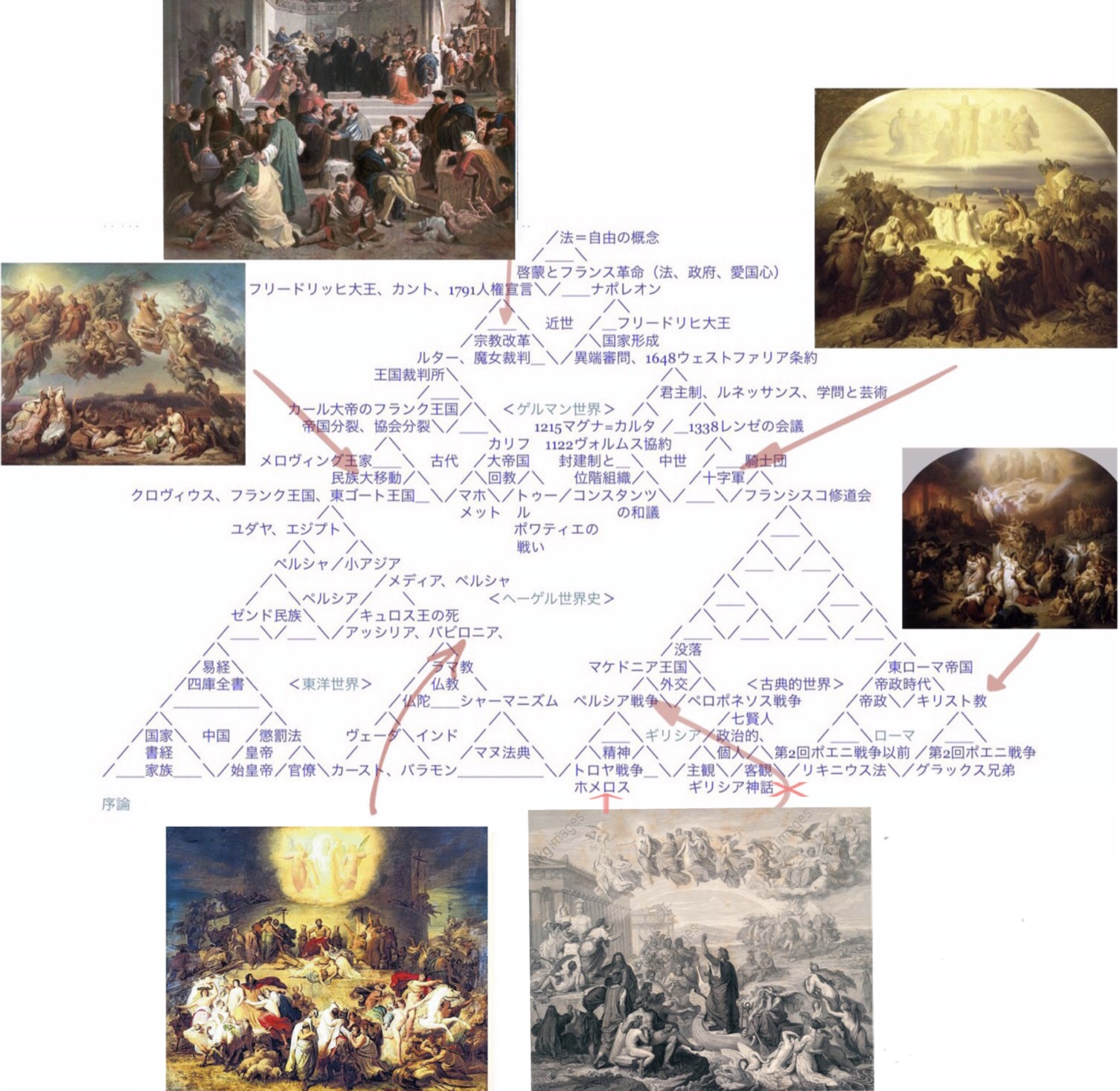




















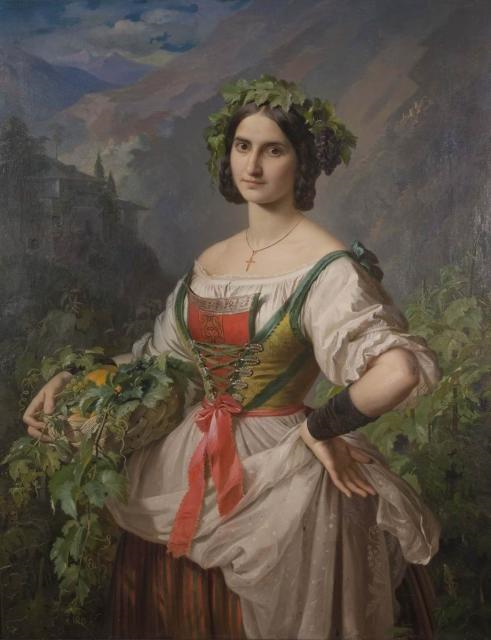
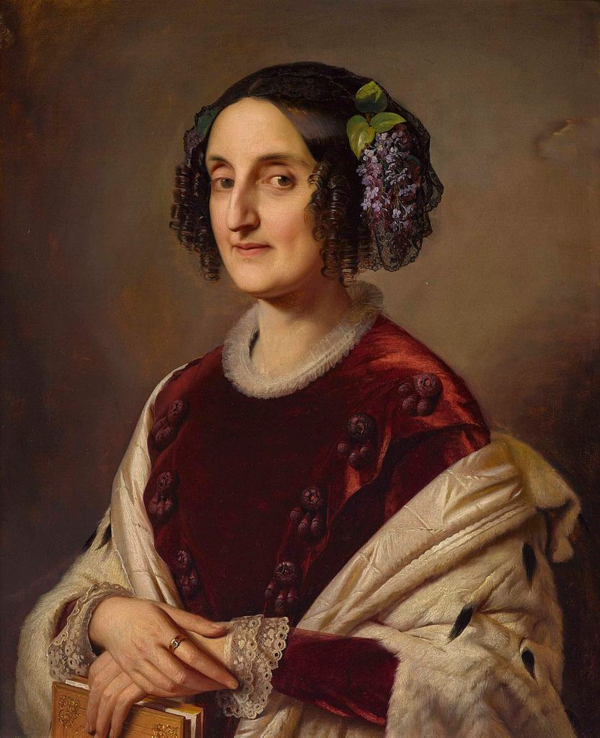
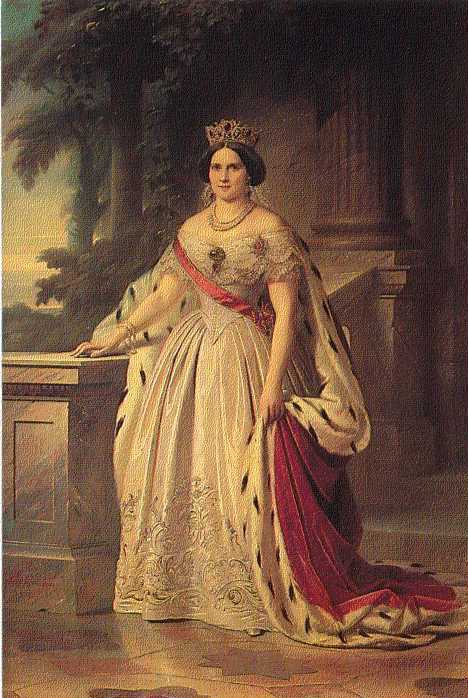
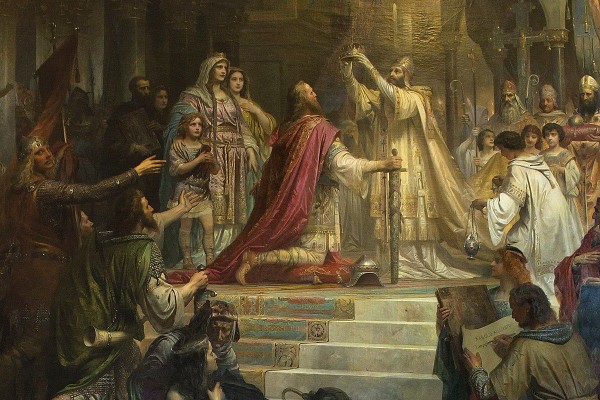
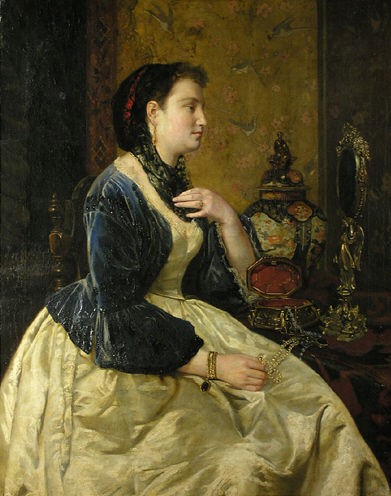
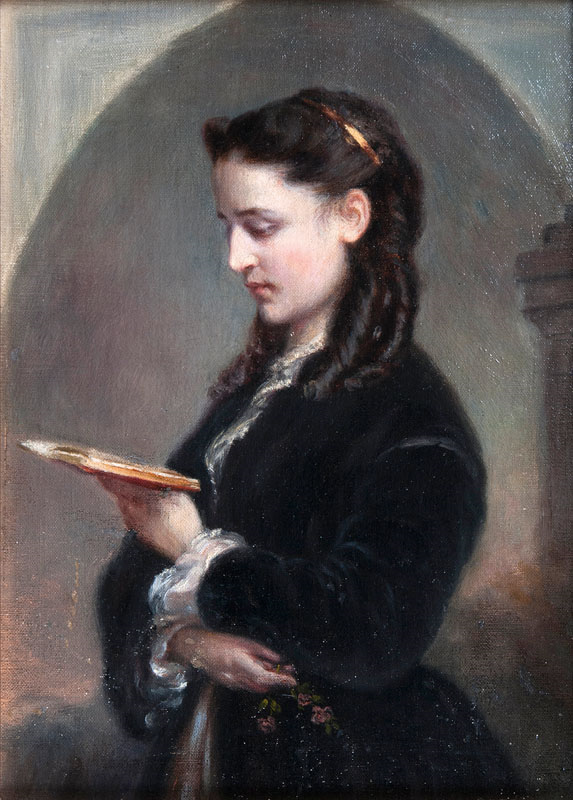
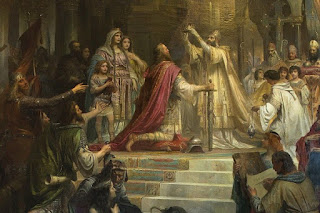
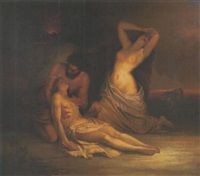

1 Comments:
Abb. 5: Ansichtskarte „Erinnerung an die Lutherfestspiele Breslau 1902“ mit Erich Ziegel als Martin Luther, 14 x 9 cm; Luthersammlung IKZG-RE
図5:絵葉書「Remembrance of Luther Festival Breslau 1902」マルティン・ルーサー役のエーリッヒ・ジーゲル、14×9cm、ルーサー・コレクションIKZG-RE
コメントを投稿
<< Home